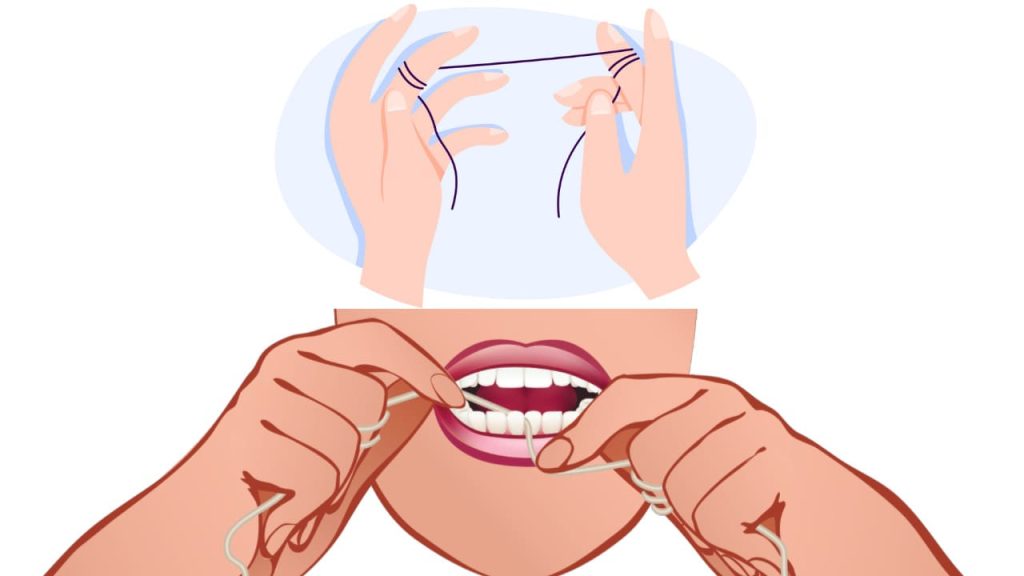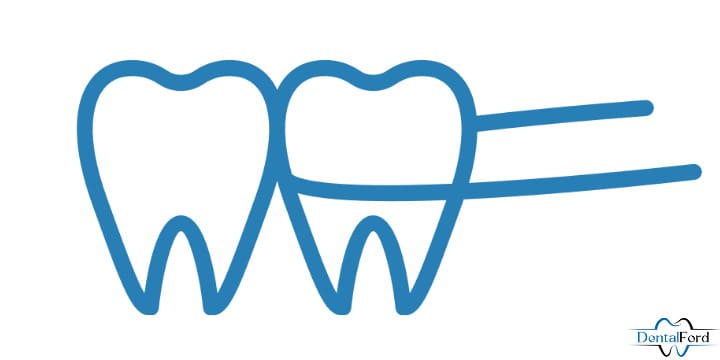What is Dental floss?
Dental floss is a thread-like tool and one type of interdental aid used to remove plaque and clean the proximal surface of the teeth.
Toothbrushing does not clean the entire tooth surface as a major portion of the tooth remains untouched from the cleaning action of the toothbrush; Dental floss and other interdental aids play a vital role in the cleaning of such areas.
Flossing teeth is very important for Good oral health and every individual should floss their teeth at least once a day. However, many people are unaware of flossing, and many complain that it is hard, some complaint about bleeding gums because of flossing, etc. Do you know, Should you floss before or after brushing?
Why is Flossing Teeth Important for Good Oral health?
As we discussed, flossing removes bacterial plaque biofilm and cleans the proximal surfaces of teeth. Dental plaque is very important to clean as it causes caries or cavities as well as gum and periodontal diseases. Different studies shows how regular flossing helps to reduce interproximal caries instead of intermittent cleaning.
Normal toothbrushes do not reach everywhere, so you can use dental floss to clean those areas, if those untouched areas are not cleaned regularly then over time dental plaque on those areas mineralizes and forms hard calculus. This hard-formed calculus weakens overall periodontal health. That’s why flossing plays an important role in the good oral hygiene routine.
Research showed, adding a flossing habit along with toothbrushing in an oral hygiene routine decreases gum bleeding and microbes associated with periodontal diseases.
Which type of Floss do you require?
There are many types of dental floss available in the market these days; waxed dental floss, unwaxed dental floss, flavored floss, thick floss, thin floss, superfloss, powered flosser or electric flosser, handled floss, etc.
Almost all floss provides a good outcome so you can choose floss as per your ease of use and personal choice. If you have tight teeth contact points then you can use waxed floss for easy flossing; however, many people have an allergy to wax, so they should avoid waxed floss. some people may not be comfortable with using dental floss with fingers and can opt for handled floss so you don’t have to use your fingers for holding floss.
There is also Superfloss (developed by Oral B laboratories, the Gillette company; Boston, MA) available in the market for patients who have fixed partial dentures for cleaning plaque.
How to use Floss properly?
It is important to know how to use dental floss to floss your teeth properly because improper flossing may damage your gums or gingival tissue and create a floss cleft or proximal grooves in gums that we have discussed later in this article.

- First, take 15 to 18 inches of dental floss, and wrap the ends of the floss around the middle fingers of each hand, so you can use your forefinger to guide the floss in interproximal space between teeth.
- After that, stretch and pass it through the contact area with a firm back and forth mention (gently moving buccolingually in a sawing motion).
- Next, once the floss comes below the contact area, wrap the floss around the proximal surface of the tooth like a C-shape loop, and move it in the margin of the gums or gingiva.

- Then, move the floss firmly along the tooth up to the contact area. Repeat this up-and-down stroke 2-3 times and then repeat this process on the proximal surface of the adjacent tooth (tooth next to it).
Follow this process of flossing on all your teeth for proper cleaning.
Care must be taken while flossing, forcefully snapping floss, and doing aggressive up-down forces through the contact area damages gums and leads floss cleft or gingival grooves; gums may bleed and even recedes if care is not taken. So you should take care of it while flossing.
I hope this informative article is helpful to you in understanding dental floss and flossing. You should add a flossing habit to your oral care routine for healthy teeth and gums.


